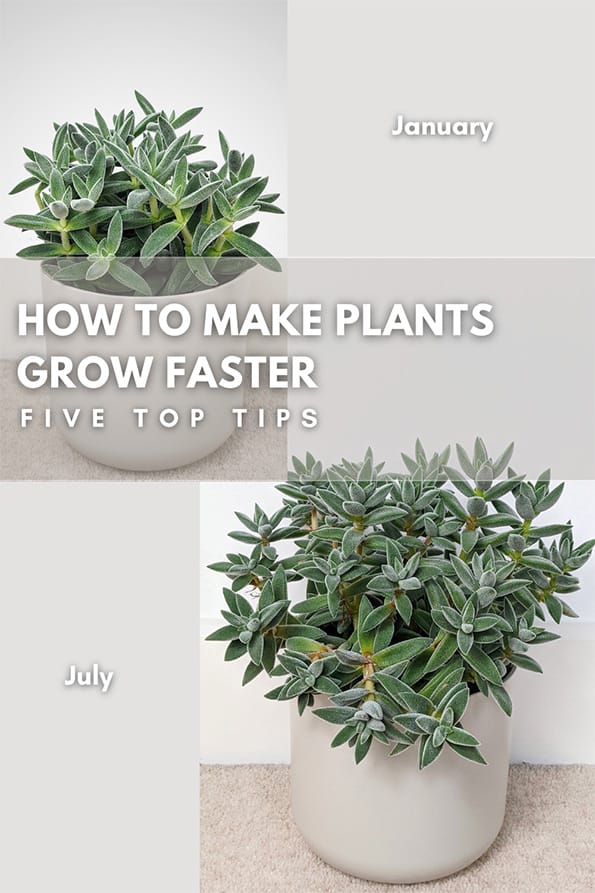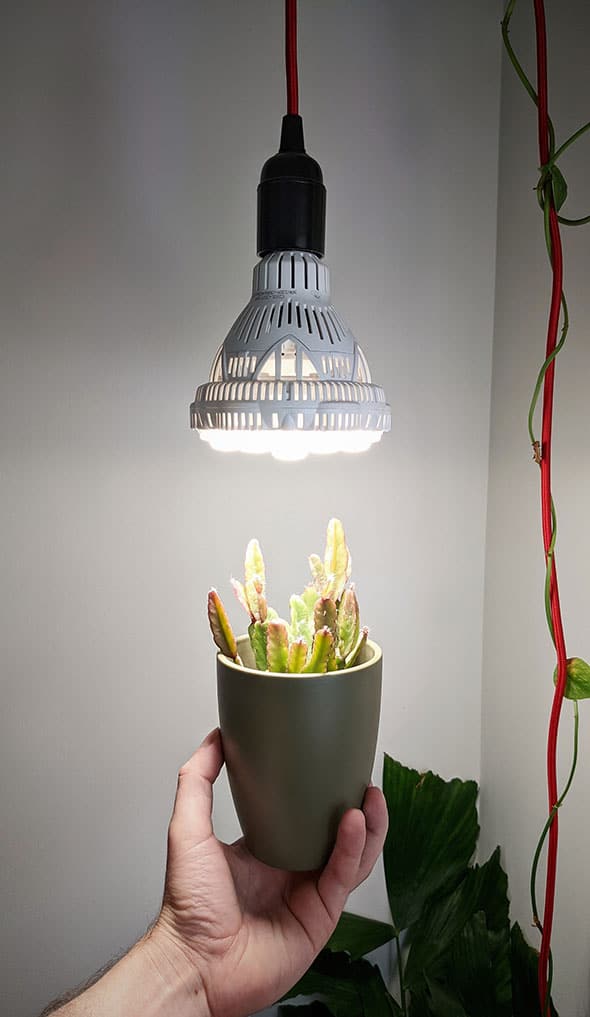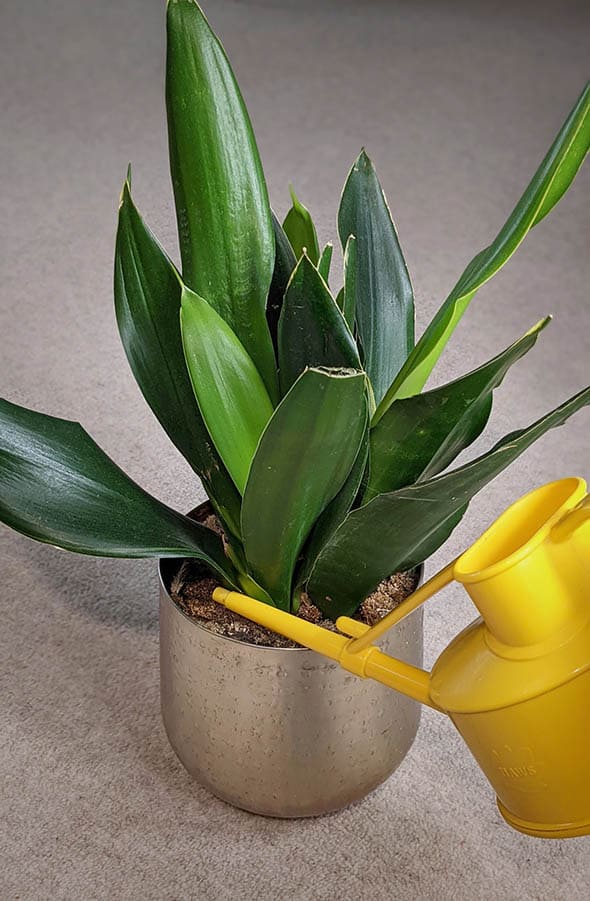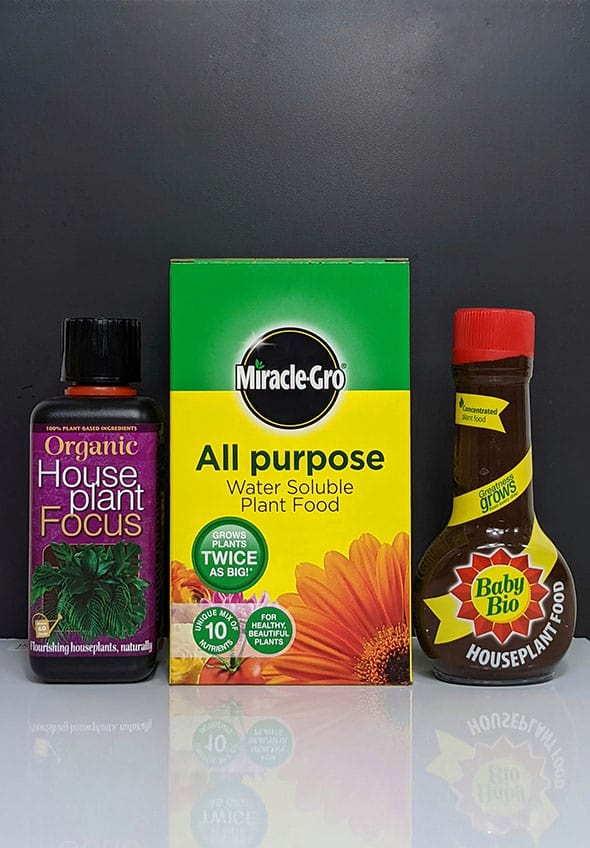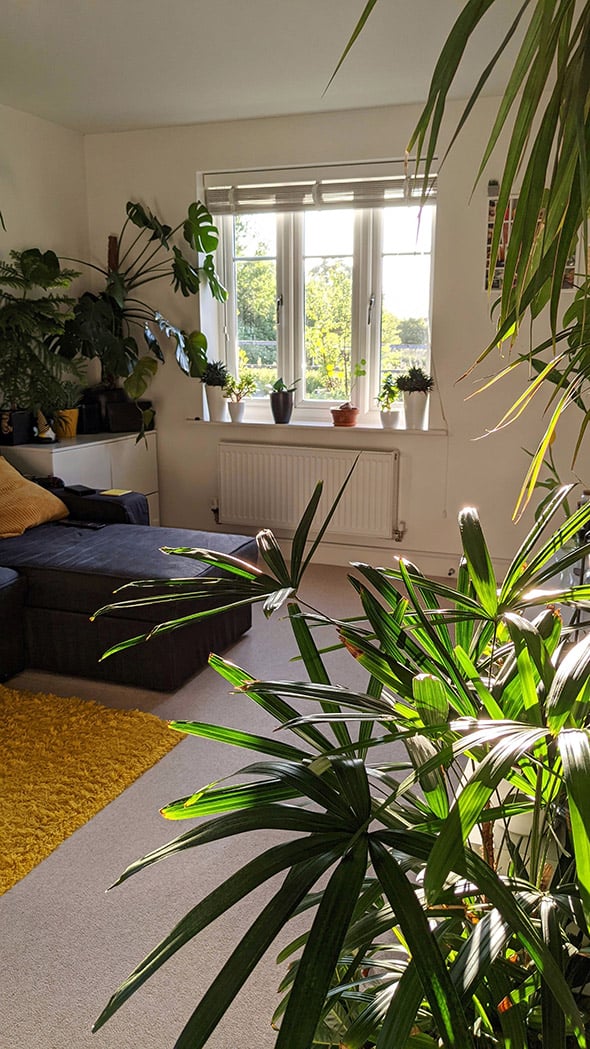The speed of plant growth you can ultimately get will depend on the type of plant you have. Even with proper care, new growth will only be as fast as the genetics of the plant allows.
That said, there are a few tried and tested things you can do to push this growth to the limit. This article shares the main things you can do now to get healthy growth sprouting (and lots of it, too!).
Crassula 'Tarantula' is a popular houseplant but it's not an overly fast-growing plant in most homes. Over the last 6 months, I've been growing it into a monster by following the tips below.
If you're eager to accelerate your plant's growth and seeking the best methods to do so, this article is your guide. I'll be sharing what I believe are fantastic ways to significantly boost your plants' growth and unlock their full potential. So, let's begin!

Hi, I'm Tom!
If you're like me and enjoy the challenge of growing houseplants and getting them to thrive, then Ourhouseplants can help. This website shares my knowledge and years of growing plants and provides (hopefully) helpful advice on properly caring for your indoor plant friends.
Starting off with the most basic (and perhaps obvious) tip for speedy good healthy growth of your plants. Light.
Lack of light is often one of the biggest things holding your plants back.
In order to produce food that provides energy and fuels development, your plant needs to carry out light dependent chemical reactions. One of the key ingredients that make it all work is, you guessed it, light.
Whether it's natural or artificial, light is an essential component and requirement for all houseplants you're attempting to cultivate. If you want to dive deeper into the subject, check out my article - what are the best plants for a room with no light?
Giving your plants enough light will increase their growth rate and help unlock their full potential. Natural light or using indoor grow lights will all work.
Most homes don't mirror a plant's natural habitat. Even spots that you might think fulfill the "bright indirect light" goal that most houseplants want, are still likely to be darker than what they really need.
That might not make much sense. But think of it like this.
Our homes tend to have one or two windows in each room, often with them facing in just one direction.
When plants grow outdoors, they get light from multiple directions at a much higher intensity than what makes it indoors.
All you need to do to test this for yourself is walk outside. Even on overcast days there should be a noticeable difference in brightness compared to what you find in your home.
Practically, we can't install horizontal glass roofs on our homes to bathe everything in bright light. So the goal with houseplants (and this tip) is to maximize the absolute heck out of what we can provide.
If you're familiar with photosynthesis, you'll already know that plants need water to make this work. As I mentioned in the "light" tip above, water is another necessary ingredient for plants to produce energy.
So we need to ensure we get our plants' watering needs spot on wherever possible.
Less than 5% of the water you give your plant is actually used for photosynthesis. But the other 95% is just as important for the health and growth of your plants.
Water is vital to plant life, not just for producing energy, but for transporting it around the plant. Helping regulate temperature and being able to extract and pull up nutrients from the potting mix is all dependent on water.
Unfortunately, watering mistakes, too much or too little, are terribly common and can hinder the growing ability of your houseplant. Try and do this instead.
Once you've got the basics down, it's time to think about using fertilizers.
Most potting mediums will have a limited supply of nutrients that plants need for growing. Once they've been used up, things slow down. Houseplants can survive for years without adding additional feed to their potting soils.
But this is surviving and not thriving. Recharging the soil with nutrients will kick things into gear again.
These are some of the most popular brands producing products that they claim will provide essential nutrients for fast-growing indoor plants.
There are a lot of products to pick from and things to consider when it comes to the best types of fertilizer. I have a full post on feeding if you want more.
But in really simple terms you're looking for a product with a NPK rating. This tells you it contains Nitrogen, Phosphorus and Potassium, the three essential building blocks for growing plants well.
There are different types of fertilizer out there for sale, most being chemical fertilizers. Organic matter, compost tea and aquarium water can certainly be used for many plants, but the results are less predictable than the chemical alternatives.
I don't personally have a problem with processed products like this (I'm not eating my houseplants afterall), and to their credit, they have very predictable and measured concentrations.
A huge number of houseplants we grow today come from tropical regions of the world. These areas tend to be warm for most of the year and at temperatures considerably higher than most houseplants are exposed to.
If you want the most efficient growth then you're going to want to try and replicate the growing environments that the plant evolved to survive in. This tip is all about the benefits of increased temperatures.
You don't need to provide super high temperatures, but notching it up a little, especially during the summer, should mean you have fast-growing plants on your hands.
Don't underestimate the power of higher temperatures on growth.
If the light levels are good, you've got a watering schedule down and you're feeding regularly, adding in this final piece of the puzzle can create explosive growth.
Think of gardeners growing tomato plants or chilies in greenhouses and how much bigger they are. Houseplants in a sunroom, conservatory or even a small porch will often give similar results. Heat can be truly transformative; if you can provide it, why wouldn't you?
The previous four tips, will always yield the strongest results if you're trying to grow your plants faster. They're the fundamentals of plant care and that's the reason they're my top tips. Meet them and you will almost certainly get positive results.
There are some other ideas or hacks you might have heard of or want to try. I'll cover a few of these now and explain why they can help, but in most cases, they're less powerful than you might think.
The plants are well fed and watered and this room is bright and warm. You can almost see them growing.
The idea is you prune top growth which stimulates the plant to grow more stems lower down.
Do I recommend this?
This is an excellent way to rejuvenate a leggy plant or one growing in a way you don't like.
But I don't advocate it in general as a way to increase plant growth. All it ultimately does is direct growth from the stem you've removed and focuses it on new ones lower down.
This hack involves removing your plant from it's pot and cutting off a third of the healthy roots. The logic is that this then stimulates more root growth.
Do I recommend this?
Absolutely not. Total nonsense and probably harmful to your plant. Of course doing this would stimulate root growth... because they have to be regrown! This is a huge waste of time and energy that could be better spent on the foliage.
By all means you can "tease out" the roots when repotting to stop them from being so compacted, remove rotten or dead ones that you see, but don't randomly prune off anything from healthy strong root systems.
Many people believe that playing music or talking to their plants can boost the speed of growth.
Do I recommend this?
I explore this in detail over on my do plants like music? post, including looking at what the science says about it.
There is some support that music and sound can help plants grow. But it's not a universally accepted idea; it doesn't work on all types of plants, and it can be tricky to pull off properly.
I don't think there is any harm in having music playing or chatting with your plants, but I'm dubious that it would make a huge difference.
Plants grow in certain ways because of the hormones that they produce. So there are sellers trying to sell "plant hormones" for faster growth.
Do I recommend this?
Waste of time for indoor gardeners. You can definitely use hormones like Keiki Paste to encourage growth to happen in specific places, but it doesn't make the plant grow faster.
Everything else being sold is probably just basic fertilizer. Which you know already that I do recommend because this would provide the necessary nutrients to support the growth of plants. However, if the seller is being dishonest with the labeling to start with, then I wouldn't trust the product itself.
Moving your plant into a bigger pot and giving it a repot can boost growth.
Do I recommend this?
If growth has completely stalled for 6 months or more and you've followed my previous four tips, then yes a repot should be on the cards.
Changing up the potting medium could improve the soil quality and how it functions, which usually leads to healthy plants. And healthy plants grow better.
I never endorse random repotting though, if it's growing happily already, then a repot won't make it grow faster.
This hack follows that plants will grow more if you increase humidity levels.
Do I recommend this?
Unhealthy plants that need higher humidity levels but aren't getting it would definitely gain. High humidity areas also generally have warmer temperatures and there is less water being lost by the plant through transpiration, all
positive things that can aid growth.
If you're focusing solely on speed, then it's not going to make a huge difference. But if you can easily increase the levels around your plants then it's worth doing for the improved health and support.
